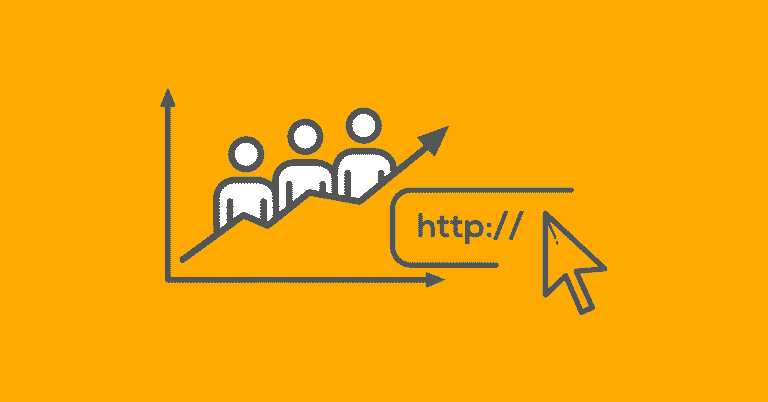In the modern business landscape, small and medium-sized enterprises (SMEs) in Australia are facing an ever-increasing array of challenges—rising operational costs, fierce competition, and the constant pressure to innovate. Yet, amidst these hurdles, a transformative force is emerging: Artificial Intelligence (AI). Once considered a tool for large enterprises, AI is now accessible to SMEs, offering a wealth of opportunities to drive growth, enhance efficiency, and improve customer experience.
AI-powered solutions are helping Australian SMEs automate processes, analyze data, and make smarter decisions. In this blog, we will explore how AI and automation are unlocking new possibilities for SMEs in Australia and how they can leverage these technologies to stay competitive and thrive in a rapidly evolving market.
1. Streamlining Operations with AI-Powered Automation
For many SMEs in Australia, operational inefficiency can be a major drain on resources. Whether it’s managing inventory, processing invoices, or handling customer support, the time and effort spent on manual tasks can quickly add up. AI and automation offer a solution by reducing the need for human intervention in repetitive processes.
AI tools can automate routine administrative tasks such as invoicing, data entry, and payroll management, freeing up valuable time for staff to focus on more strategic, value-added activities. In customer service, chatbots powered by AI can handle common queries, offering instant responses and resolving issues 24/7, reducing the workload on human agents.
For example, Xero, an Australian cloud-based accounting software company, uses AI to automate bookkeeping tasks, allowing businesses to track expenses, reconcile accounts, and generate reports with minimal manual input. This reduces the chances of human error and saves SMEs both time and money.
2. Enhancing Customer Experience with AI-Driven Insights
AI is also revolutionizing how SMEs understand and interact with their customers. Customer relationship management (CRM) systems powered by AI can analyze large datasets to provide actionable insights about customer behavior, preferences, and purchasing habits. With this information, businesses can better personalize their offerings, tailor marketing campaigns, and improve customer satisfaction.
For instance, AI can help SMEs segment their customers based on demographics, past behavior, and predicted future behavior, allowing businesses to create highly targeted marketing campaigns. Predictive analytics can identify the products or services that are most likely to appeal to individual customers, improving cross-selling and upselling opportunities.
Additionally, AI chatbots and virtual assistants are becoming increasingly popular in providing real-time customer support. For example, Kookai Australia, a fashion retailer, uses AI-powered bots to assist online shoppers with product recommendations, order tracking, and customer service inquiries. This enables them to deliver a seamless customer experience while reducing the need for additional customer service staff.
3. Optimizing Marketing Efforts with AI-Driven Campaigns
Marketing is often a challenging area for SMEs, particularly when it comes to maximizing return on investment (ROI) for advertising spend. AI-powered marketing tools can help SMEs better understand their audience, optimize campaigns, and increase conversion rates. AI can analyze customer data to identify patterns and predict which strategies are most likely to succeed.
For example, AI algorithms can analyze customer interactions on social media, websites, and emails to recommend personalized content or products, increasing the chances of a purchase. Tools like Google Ads and Facebook Ads leverage AI to automatically optimize ad placement and targeting, ensuring that SMEs get the best results from their advertising budgets.
Moreover, AI can help with content creation, using natural language processing (NLP) to generate text-based content or even assist with email marketing campaigns. With AI tools like Jasper or Copy.ai, SMEs can generate blog posts, social media updates, and product descriptions in a fraction of the time it would take to write manually.
4. AI-Powered Inventory Management: Reducing Waste & Increasing Efficiency
Inventory management is a critical aspect of running a successful SME, but it can be a complex and time-consuming task. Stockouts, overstocking, and slow-moving inventory can all impact profitability. AI and machine learning (ML) are transforming how businesses manage their stock levels and order fulfillment processes.
AI can help predict demand fluctuations by analyzing historical data, current trends, and external factors such as seasonality or economic conditions. This allows businesses to optimize their stock levels, reducing the risk of excess inventory or shortages. For example, AI-driven inventory management systems can automatically reorder products when stock levels reach a predefined threshold, ensuring businesses never run out of popular items.
Retailers like Bunnings Warehouse are already using AI-powered inventory systems to track sales patterns and predict product demand. This allows SMEs to be more agile in their supply chain, ultimately reducing costs and improving cash flow.
5. Boosting Decision-Making with AI-Powered Analytics
Data-driven decision-making is no longer a luxury reserved for large corporations—AI is making it accessible to SMEs, helping them make more informed decisions and adapt to changing market conditions. AI analytics tools can process vast amounts of data in real-time, offering SMEs valuable insights into their operations, customer preferences, and competitive landscape.
For example, AI-powered dashboards can provide SMEs with visualizations of key metrics, such as sales performance, customer retention rates, and operational costs. This real-time information enables businesses to identify potential issues or opportunities faster and take corrective actions immediately.
One example of AI-driven decision-making in action is in financial forecasting. AI tools can analyze past financial data to predict future revenue, costs, and cash flow, helping businesses plan better and make more accurate budgetary decisions. Sage Intacct, a cloud-based accounting software used by Australian SMEs, integrates AI to deliver real-time financial insights that allow businesses to monitor their financial health and make more strategic decisions.
6. AI-Driven Fraud Detection & Security
For Australian SMEs, security is always a top concern, especially when it comes to online transactions and protecting sensitive customer information. AI and machine learning are being used to detect and prevent fraud by analyzing transaction patterns and identifying suspicious activity in real-time.
AI algorithms can flag unusual behavior—such as sudden spikes in transactions, changes in buying patterns, or mismatched billing details—that may indicate fraud or security breaches. With AI-powered fraud detection systems, SMEs can reduce the risk of financial losses, safeguard customer data, and comply with regulatory requirements.
For instance, payment processing platforms like Afterpay and Zip Pay use AI-based fraud prevention systems to ensure that transactions are secure and legitimate, which is essential for maintaining customer trust and protecting the business’s bottom line.
7. AI-Enabled Human Resources: Improving Recruitment & Employee Experience
Finding the right talent is crucial for the growth and success of any SME. AI is making the recruitment process more efficient by automating candidate screening, identifying the best-fit candidates, and reducing bias. AI-powered recruitment tools can analyze resumes, assess job descriptions, and match candidates to positions based on their qualifications, skills, and experience.
Furthermore, AI can also be used to improve employee engagement and retention. By analyzing employee feedback and performance data, AI can identify areas where employees may be struggling or disengaged, enabling HR managers to take proactive steps to improve workplace culture and job satisfaction.
In Australia, HR platforms like Xref use AI to enhance recruitment by automating reference checking, allowing SMEs to save time and focus on building better teams. Similarly, employee wellness programs powered by AI can analyze data from wearables or employee surveys to tailor wellness initiatives that boost employee morale and productivity.
Conclusion: AI as a Key Growth Driver for Australian SMEs
The potential of AI and automation for Australian SMEs is immense. From streamlining operations and enhancing customer experience to improving marketing efforts and financial decision-making, AI is providing Australian businesses with the tools they need to stay competitive in an increasingly digital world. By embracing these technologies, SMEs can reduce costs, improve productivity, and unlock new avenues for growth.
As AI technology continues to evolve, the gap between large enterprises and SMEs is closing. The future of business is smart, data-driven, and automated, and for Australian SMEs, adopting AI solutions is not just an option—it’s a strategic necessity. Embracing AI now will help set the stage for long-term success and sustainability in a rapidly changing marketplace.








